12/5/15: rooting roses & best soil, wood ash, foods to lose weight
strawchicago z5
8 years ago
last modified: 8 years ago
Featured Answer
Sort by:Oldest
Comments (53)
strawchicago z5
8 years agolast modified: 8 years agostrawchicago z5
8 years agolast modified: 8 years agoRelated Discussions
Best and worst roses for your soil and climate
Comments (198)Carol: Forgot to commend you on your walking at -30 C or -22 F. Wow!! I admire that. Two years ago it got down to -20 F, I ran out for few minutes to dump my compost into the garden, with gloves & hat, and my hands were in pain when I got back !! I'm moving my compost pile closer to the house this year. Our temp will be -7 F, or -21 C in a few days, I'm praying that my kid's school will close !! I was walking for weeks daily in the summer, and didn't lose weight. But I lost 8 lbs. during flu-shot reaction: drank lots of fluid & slept a lot & zero exercise. So I'm doing the lazy way with smoothie (BIG THANKS TO KHALID) .. my pants are looser. I prefer the lazy way: sleep a lot, drink fluids via smoothie, see Khalid's thread on smoothie below: http://forums.gardenweb.com/discussions/4221380/breakfast-smoothies-with-rose-petals-and-rose-tea?n=48 Lavenderlace: I have been admiring your Twice in a Blue Moon and Singin' the Blue .. really wish Roses Unlimited would carry that. I'm into blue roses this year....See More10/24/15: Feed rose & us toward health & lose weight & protect eyes
Comments (66)Carol: I'm happy and proud for Holly. Autistic children are VERY SMART, and VERY GIFTED. Jess: I was puzzled by the 40 lbs. mistake too, I saw your hand in one of the pic., it's a slender hand. I'm happy that it's only 20 lbs., due to the kilograms conversion. Twenty pounds is easy to lose. It took me 6 months to lose 20 lbs. when I had the time to eat salad & apple & carrot & exercise. Then I got busy & get into fast-food & IV myself with juice ... and gained back 20 lbs. WEIGHT-LOSS is a life-long-habit to MAINTAIN, rather than a goal to achieve. People achieve that goal, go back to the old habits, and re-gain all-over again. Jim: Thanks for that link on processed meat, I read the entire article. I wish it would say how many people were involved in that study, or how many test-subjects. Re-post info. from Huffingpost on tips to lose weight: http://www.huffingtonpost.com/entry/tips-losing-weight_562e8606e4b00aa54a4ab51b "Aim for 20 to 35 grams of fiber a day from plant foods, since fiber helps fill you up and slows absorption of carbohydrates. " Portion control: Popular “100-calorie” food packages do the portion controlling for you Eating mindfully means giving full attention to what you eat, savoring each bite, acknowledging what you like and don’t like, and not eating when distracted (such as while watching TV, working on the computer). Chew slowly, and savor each bite: Keep in mind also that the most pleasure often comes from the first few bites of a food; after that, it’s the law of diminishing returns. Thus, you should focus on those first few tastes of chocolate, cake, or other indulgences, as this may be enough to satisfy. Get protein in all meals: Some research suggests that distributing your protein throughout the day also helps in weight loss, rather than eating the bulk of it at, say, dinnertime. According to a 2015 paper in theAmerican Journal of Clinical Nutrition, higher-protein diets that include at least 25 grams of protein at each meal may reduce appetite and thus body weight, compared with lower-protein diets. Limit variety at meals. Don’t drink your calories. Allow for (controlled) indulgences. Consider weighing yourself regularly—at least once a week." Huffington Post Tips. **** From Straw: I agree with the above. My lowest weights were achieved when I snacked on high-fiber & high-protein cereal with soy milk ... with at least 35 gram of fiber per day. Also at least 25 g. of protein for each meal, be it peanut-butter or eggs for breakfast, beans for lunch, or fish/meat for dinner. I gained weight whenever I forget to weigh myself at least once a week. Really love their tip of " Keep in mind also that the most pleasure often comes from the first few bites of a food; after that, it’s the law of diminishing returns." So true, I really enjoy the first 4 bites of peanut-butter toast, that's all I can remember ... the rest was just to fill my stomach. Dolly Parton stays slim with her life-long habit, she eats 3 bites of a yummy food, and NO MORE. Practice portion-control is actually fun, once it becomes a habit. So proud of myself last night, I had a sour fruit, so I grabbed a fig-bar, took 3 bites, it was too sweet ... Instead of finishing that, I told myself "You don't have to eat that, you can give it to God." So I wrapped the rest and put away, GREAT FEELING! It felt good to be in control over a piece of junk, and turning something over to God, rather than torturing my body with that....See More12/4/15 Rose thorn infection, winter-protect roses, prevent cold & flu
Comments (62)Khalid: I didn't see your message until I came back to this thread. Thank you for what you wrote: " I regularly use black tea with ginger and cinnamon. Honey (with black pepper if I have a source throat), cardamom (small and large), garlic (as part of all our curries), onions (an integral part of our curry), as well as a few more herbs, spices etc." All those have anti-viral and anti-bacterial .. I agree with using food as preventive medicine, rather than dangerous flu-shot (combining virus). Carol: Glad to hear that you are back on schedule .. I am delighted to hear of your progress & success. It feels SO GOOD to have looser pants, and I wish everyone have that experience with daily exercise. Sam: does your Achilles tendon hurt to wear shoes with heels? I don't like shoes with heels: one of my foot is shorter than the other. I actually do more exercise on the treadmill than outside ... I can wear my husband Walmart open-heel plastic clog, I insert a memory foam inside ... and wear that on the treadmill. I wear size 7 woman, but I need a BIG shoe to insert the thick $5 memory foam. The plastic clog has bigger toe-box than running shoe, plus no need for lacing....See MoreGarden in Nov. & buy-list & rooting roses & soil prep& what's learned?
Comments (49)Lavenderlace: Your "Doris" day looks almost thornless. Yellow Molineux is also known as low-thorn, and fades less than Julia Child. Pat Henry of Roses Unlimited is very nice. She put up with my changes in order for spring 2017. Her husband died Oct 24, 2015 .. I'm sad for her. Here's what I wrote to Roses Unlimited regarding my order: " Found that The Dark Lady and Golden Fairy Tale both have Rugosa heritage, both are very thorny. My alkaline heavy clay isn't suitable for Rugosa (prefers sandy/loamy). Would it be possible to change that to low-thorn Nahema and Lagerfeld? I also add Barbara Streisand to make up for my sin of changing my order !! Final list is 7 roses for April 2017 delivery: Nahema, Lagerfeld, Barbra Streisand, Sonia Rykiel, Firefighter, Versigny, and Bolero." So happy that Pat Henry approved my changes. I won't make any more changes !! I got poked plenty so I'm happy with low-thorn Nahema, Firefighter, Lagerfeld. Sonia Rykiel has much less thorn than Austin roses. My buy-list consists mostly of roses that died through my zone 5a winter, the only new ones are Barbra Streisand and Lagerfeld....See Morestrawchicago z5
8 years agolast modified: 8 years agostrawchicago z5
8 years agolast modified: 8 years agoUser
8 years agolast modified: 8 years agostrawchicago z5
8 years agolast modified: 8 years agoKhalid Waleed (zone 9b Isb)
8 years agolast modified: 8 years agostrawchicago z5 thanked Khalid Waleed (zone 9b Isb)strawchicago z5
8 years agolast modified: 8 years agoKhalid Waleed (zone 9b Isb)
8 years agolast modified: 8 years agostrawchicago z5 thanked Khalid Waleed (zone 9b Isb)strawchicago z5
8 years agolast modified: 8 years agostrawchicago z5
8 years agolast modified: 8 years agostrawchicago z5
8 years agolast modified: 8 years agoKhalid Waleed (zone 9b Isb)
8 years agostrawchicago z5
8 years agolast modified: 8 years agostrawchicago z5
8 years agolast modified: 8 years agostrawchicago z5
8 years agolast modified: 8 years agostrawchicago z5
8 years agolast modified: 8 years agoKhalid Waleed (zone 9b Isb)
8 years agostrawchicago z5
8 years agolast modified: 8 years agostrawchicago z5
8 years agolast modified: 8 years agostrawchicago z5
8 years agolast modified: 8 years agostrawchicago z5
8 years agoKhalid Waleed (zone 9b Isb)
8 years agostrawchicago z5
8 years agolast modified: 8 years agoKhalid Waleed (zone 9b Isb)
8 years agojessjennings0 zone 10b
8 years agoKhalid Waleed (zone 9b Isb)
8 years agostrawchicago z5
8 years agolast modified: 8 years agoKhalid Waleed (zone 9b Isb)
8 years agostrawchicago z5
8 years agolast modified: 8 years agoUser
8 years agolast modified: 8 years agostrawchicago z5
8 years agolast modified: 8 years agoUser
8 years agostrawchicago z5
8 years agolast modified: 8 years agostrawchicago z5
8 years agolast modified: 8 years agostrawchicago z5
8 years agolast modified: 8 years ago
Related Stories

MOST POPULAR7 Ways to Design Your Kitchen to Help You Lose Weight
In his new book, Slim by Design, eating-behavior expert Brian Wansink shows us how to get our kitchens working better
Full Story
GARDENING GUIDESHow to Stop Worrying and Start Loving Clay Soil
Clay has many more benefits than you might imagine
Full Story
FARM YOUR YARDHow to Get Good Soil for Your Edible Garden
The nutrients in your soil feed the plants that feed you. Here are tips on getting it right — just in time for planting season
Full Story
BEFORE AND AFTERSSee 6 Yards Transformed by Losing Their Lawns
Wondering whether a turf lawn is the best use of your outdoor space? These homeowners did, and they found creative alternatives
Full Story
EARTH DAYThe Case for Losing the Traditional Lawn
Work less, help the environment and foster connections by just saying no to typical turf
Full Story
FARM YOUR YARDHello, Honey: Beekeeping Anywhere for Fun, Food and Good Deeds
We need pollinators, and they increasingly need us too. Here, why and how to be a bee friend
Full Story
GARDENING GUIDESWhat Kind of Roses Should You Grow?
Want to add the beauty of roses to your garden? Find out which ones, from old-fashioned to modern, are right for you
Full Story
FALL GARDENING5 Ways to Put Fall Leaves to Work in Your Garden
Improve your soil and yard the organic way with a valuable garden booster that grows on trees
Full Story
GARDENING GUIDESGarden Myths to Debunk as You Dig This Fall and Rest Over Winter
Termites hate wood mulch, don’t amend soil for trees, avoid gravel in planters — and more nuggets of garden wisdom
Full Story
WINTER GARDENINGPruning Secrets for Exquisite Roses
Encourage gorgeous blooms year after year with this time-tested advice on how to prune your rosebush in winter for health and shape
Full Story


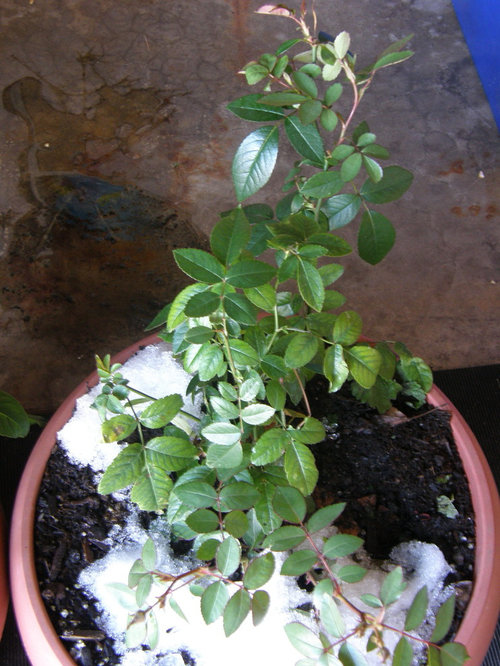
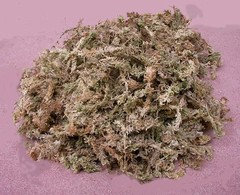
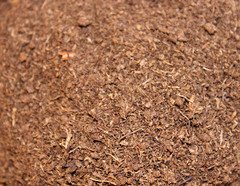
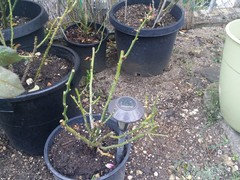
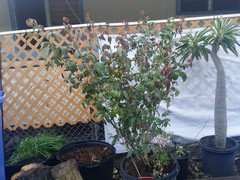

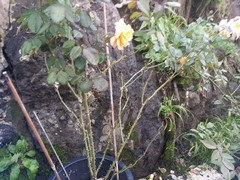
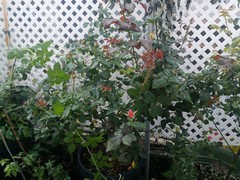
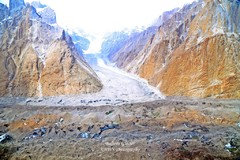



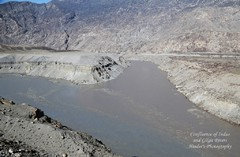


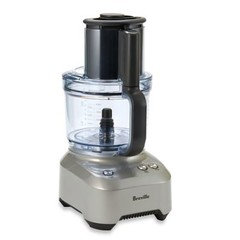

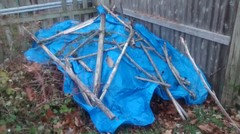
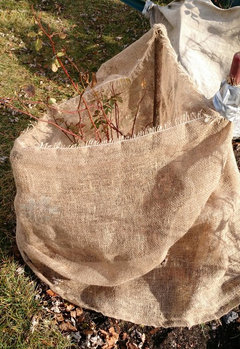

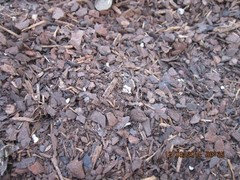
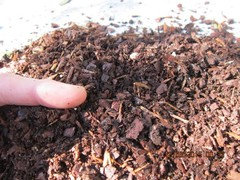



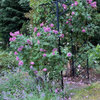
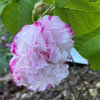
msdorkgirl